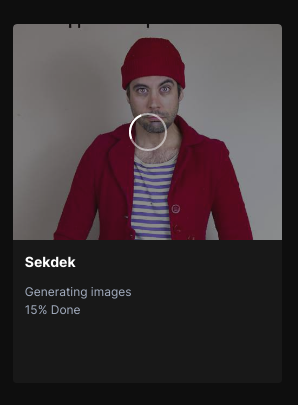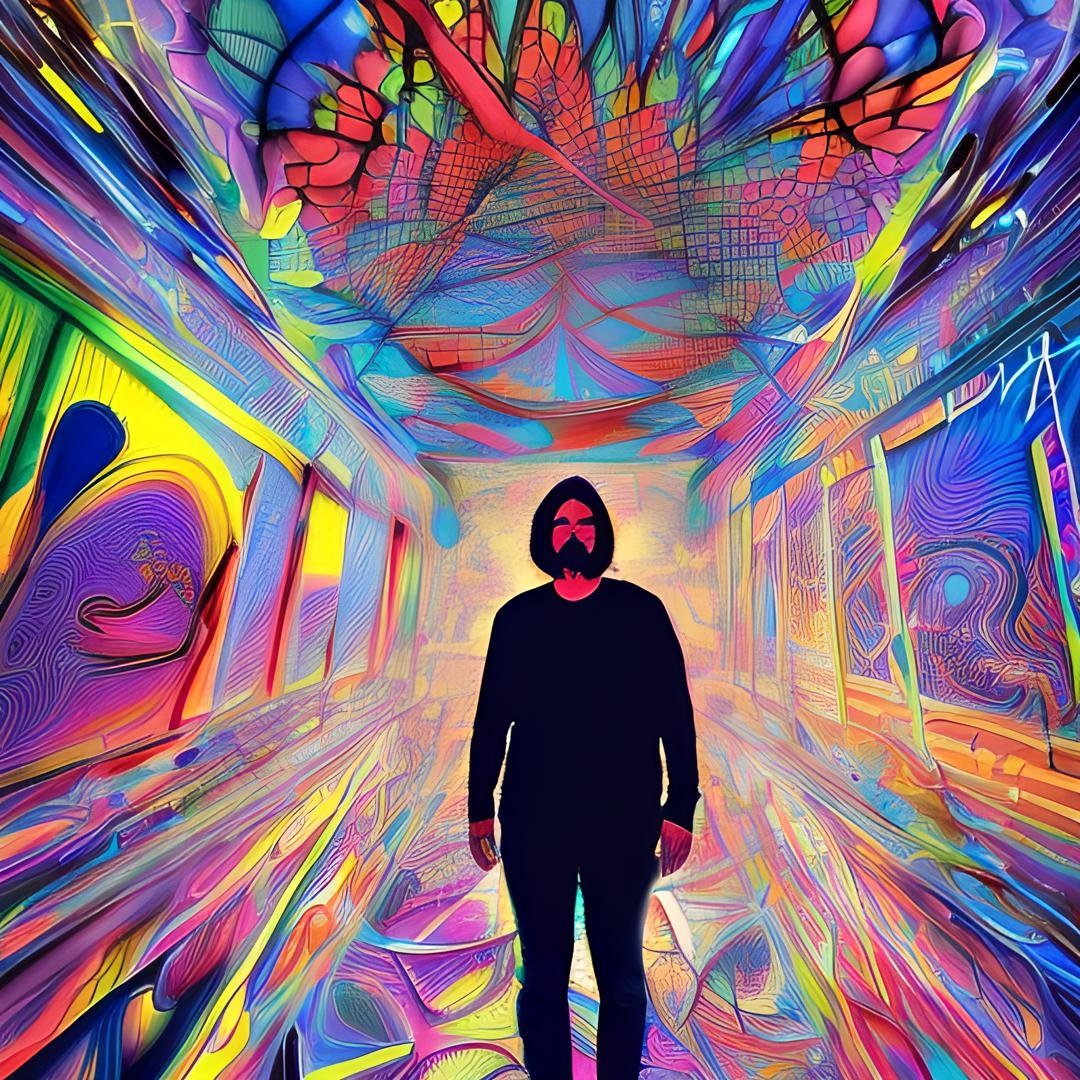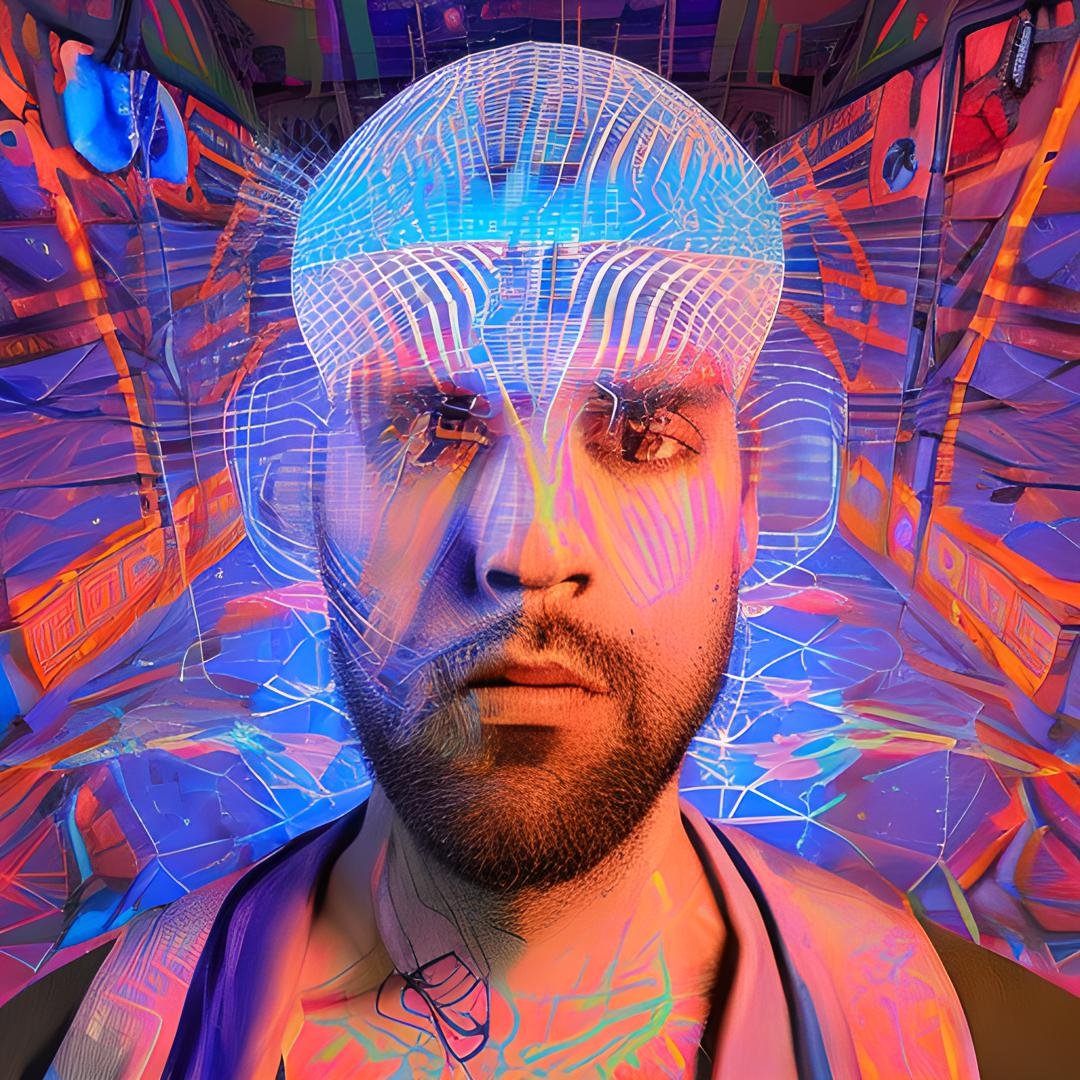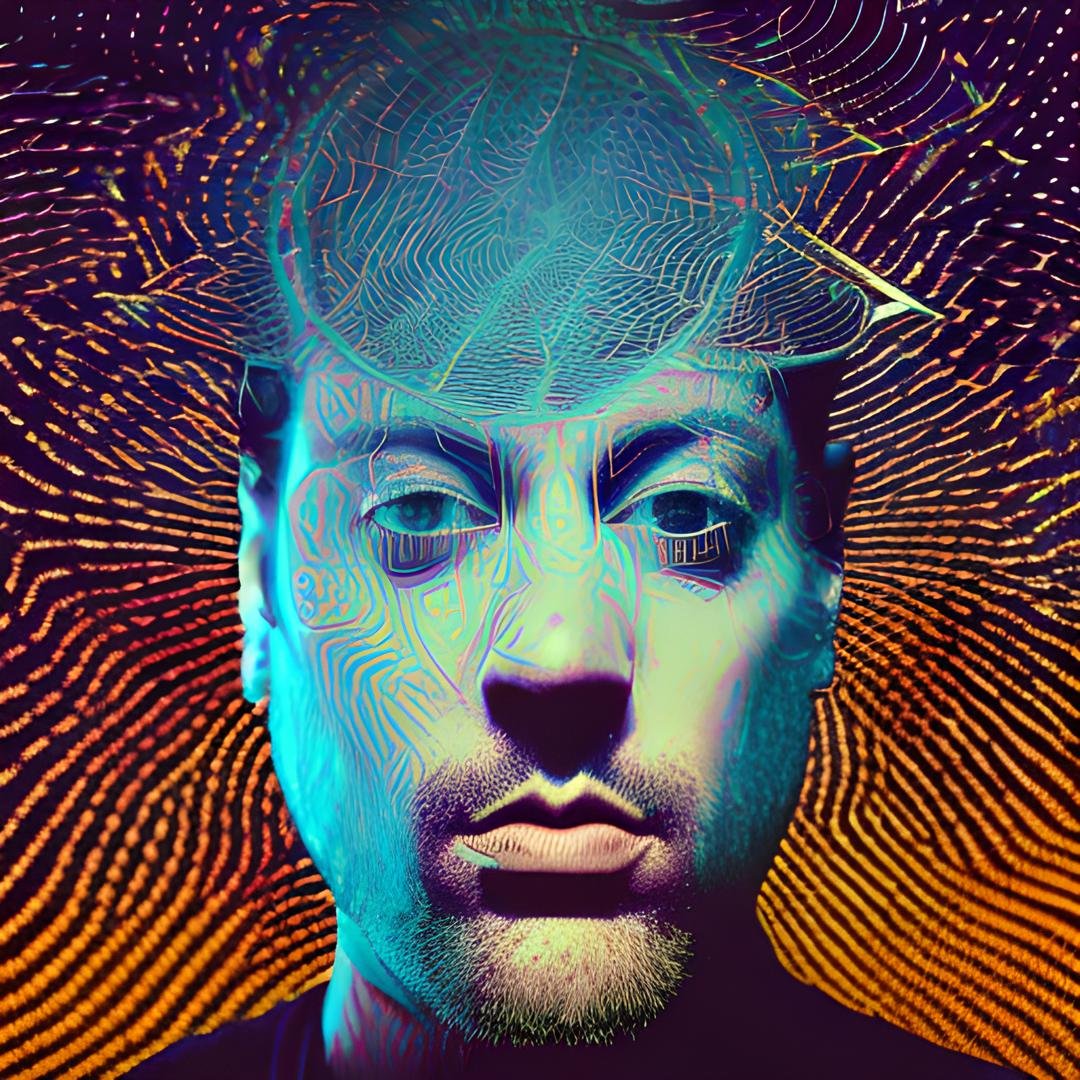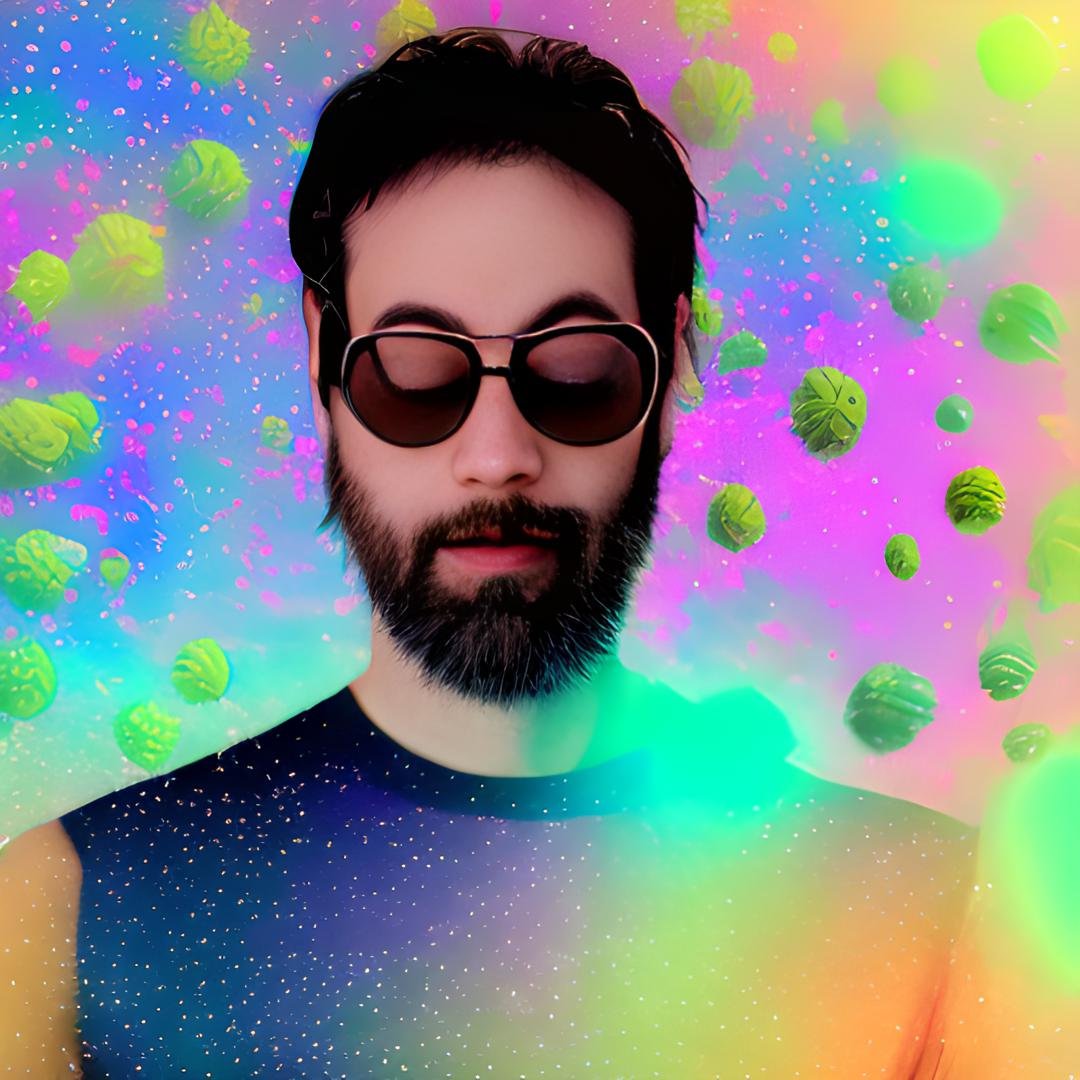Introducing ConvoGuard: The Ultimate Conversation Moderator App
Have you ever found yourself in a heated situation? Developing Self-Awareness and Understanding Triggers. * conversation or debate, only to realize that it devolves into a series of interruptions and distractions? ConvoGuard is here to help. Our innovative smartphone app tracks and evaluates conversational dynamics, providing valuable feedback to help you and your conversation partners engage in more effective, fair, and productive discussions.
Critical features of ConvoGuard include:
Real-time Interruption Detection:
Utilizes advanced speech recognition and natural language processing (NLP) algorithms to monitor conversations and accurately identify interruptions.
Provides visual and auditory alerts to notify participants of interruptions, promoting a more respectful and focused discussion.
Emotional Intensity Analysis:
Employs machine learning algorithms trained on a vast dataset of vocal patterns and emotional cues to assess the emotional intensity of interruptions.
It offers detailed breakdowns of emotional classifications, helping users understand the nature of their interruptions and develop greater emotional intelligence.
Interruption Scoring:
It uses a weighted scoring system to assign numeric values to interruptions based on their emotional intensity, type, and frequency.
Allows users to set customized thresholds for acceptable interruption scores, fostering a tailored and more constructive conversational environment.
Topic Deviation Assessment:
Leverages NLP techniques to identify the core themes of a conversation and track their development throughout the discussion.
Provides graphical representations of topic shifts, helping users visualize and address potential distractions or irrelevant arguments.
Mini Debate Moderator:
Acts as an unbiased, AI-driven moderator that evaluates conversations based on interruption scores, topic deviations, and adherence to established debate principles.
Offers actionable feedback and suggestions for improvement, promoting more effective and fair discussions.
Enhanced Self-Awareness:
Encourages users to reflect on their debate styles and adherence to ethical debate principles by providing real-time feedback and detailed analytics.
Facilitates personal growth and improved communication skills through self-reflection and understanding one's conversational habits.
Improved Interpersonal Relationships:
By fostering accountability and promoting better conversational dynamics, ConvoGuard can contribute to healthier, more productive, and more empathetic interpersonal interactions.
It provides a platform for individuals to work on their communication skills and develop deeper connections with others.
Meta Ideas and Illuminations:
The "Spell Checker" of Conversational Aptitude:
As spell checkers have improved written communication, ConvoGuard could revolutionize spoken interactions by refining conversational skills and promoting clearer, more effective communication.
Widespread adoption of ConvoGuard could lead to a cultural shift where people become more mindful of their everyday habits and strive for more meaningful, respectful, and productive discussions.
Advancing Human Understanding and Connection:
ConvoGuard could foster a greater sense of understanding and empathy among conversation participants by mitigating the negative impact of emotionally charged interruptions and distractions.
This increased understanding could promote peace, reduce conflicts, and contribute to the overall advancement of our * species as we become better equipped to engage in constructive dialogue and collaborate on solving global challenges.
By offering advanced tools for monitoring and improving conversational dynamics, ConvoGuard has the potential to revolutionize how we communicate, paving the way for a more empathetic, respectful, and connected world.
Privacy and consent are crucial considerations when using an app like ConvoGuard that records and analyzes conversations. Addressing these concerns requires careful design, implementation, and adherence to relevant data privacy regulations. Possible roadblocks and solutions:
Obtaining consent from all participants:
Roadblock: Users may need to remember or be reluctant to inform conversation participants about using ConvoGuard, leading to privacy violations.
Solution: Implement a feature that requires explicit verbal or written consent from all participants before the app starts recording. This could be done by asking users to state their agreement or provide a digital signature.
Data storage and security:
Roadblock: Users may be concerned about the security of their recorded conversations and the potential for unauthorized access to sensitive information.
Solution: Store all recorded data securely using end-to-end encryption and ensure only authorized users can access the data. Additionally, it allows users to set retention policies for their data, such as automatic deletion after a specified period.
Third-party data sharing:
Roadblock: Users may worry about sharing their data with third parties without consent, potentially compromising privacy.
Solution: Establish a transparent privacy policy outlining the app's data-sharing practices. Do not share user data with third parties without explicit user consent, and adhere to applicable data protection regulations such as the GDPR.
Anonymizing data for analysis:
Roadblock: Users may be concerned about their data being identifiable during the analysis process, leading to potential privacy breaches.
Solution: Develop algorithms to analyze conversation data without accessing personally identifiable information. This can be achieved by anonymizing the data and using aggregated insights for analysis.
Balancing privacy with the benefits of ConvoGuard: While privacy concerns are valid, the potential benefits of ConvoGuard make it worth considering the trade-offs involved. By improving conversational dynamics, fostering empathy, and enhancing interpersonal relationships, ConvoGuard can significantly contribute to personal and professional growth. To ensure that these benefits are realized without compromising privacy, the app should:
Be transparent about its data collection, storage, and sharing practices.
Offer robust privacy controls and settings for users to manage their data.
Educate users on the importance of obtaining consent and respecting the privacy of conversation participants.
By addressing privacy concerns proactively and demonstrating a commitment to protecting user data, ConvoGuard can help users feel more comfortable with the exchange of privacy data, enabling them to enjoy the app's benefits and contribute to a more empathetic and connected world.
Information neutrality and non-biased development in AI systems, especially in debate moderation and critical analysis, cannot be overstated. Ensuring neutrality and fairness in AI systems is essential for fostering open, constructive, and well-informed discussions. Several vital reasons underline the importance of addressing this issue:
Fair representation of diverse perspectives: A neutral and unbiased AI system ensures that diverse perspectives and opinions are fairly represented and considered during debates and discussions. This promotes inclusivity, mutual understanding, and a more comprehensive exploration of the subject matter.
Trustworthiness: Users must trust an AI system to provide fair and unbiased analysis, mainly when moderating debates or evaluating arguments. A perceived or actual bias in the system will undermine its credibility and limit its usefulness for fostering meaningful dialogue.
Avoiding amplifying existing biases: AI systems not carefully developed to minimize bias may inadvertently reinforce societal biases and prejudices. Ensuring that AI systems are neutral and unbiased helps prevent the amplification of these biases and promotes more honest discussions.
Ethical considerations: The development of AI systems involves various ethical considerations, including fairness, transparency, and accountability. Ensuring information neutrality and non-biased development aligns with these ethical principles and contributes to the responsible advancement of AI technology.
Encouraging critical thinking: A neutral and unbiased AI system can support users in developing their critical thinking skills by presenting balanced information and fostering a fair evaluation of diverse viewpoints. This encourages users to question assumptions, consider alternative perspectives, and arrive at well-informed conclusions.
To address the issue of bias and ensure neutrality in AI systems like debate moderators and critical analysis tools, developers can:
Employ diverse training data: Ensuring that AI systems are trained on diverse and representative data sets helps reduce the potential for bias and promotes a more balanced understanding of the subject matter.
Utilize fairness-aware algorithms: Implementing algorithms designed to minimize bias and promote fairness can help create AI systems that provide unbiased analysis and moderation.
Implement transparency measures: Providing users with information on how the AI system operates and makes decisions can foster trust in the system's neutrality and fairness.
Monitor and evaluate system performance: Regularly assessing the performance of the AI system and its potential biases can help developers identify and address any issues that may arise.
Encourage public and stakeholder input: Involving diverse stakeholders and the public in the development process can provide valuable perspectives and feedback on potential biases and help ensure the AI system's neutrality.
By proactively addressing information neutrality and non-biased development, AI systems like debate moderators and critical analysis tools can contribute to more constructive, equitable, and well-informed discussions.
Debating is an essential skill for effective communication and problem-solving. When done correctly, it allows for the free exchange of ideas, the exploration of different perspectives, and the development of critical thinking skills. However, specific rules must be followed for a debate to be productive and fair.
An analogy to understand this would be like a game of tennis, where players must abide by specific rules, such as playing within the boundaries of the court and not hitting the ball before it passes the net. Similarly, in a debate, certain boundaries and rules must be respected for the debate to be productive and fair.
Here are ten rules of proper and fair debate:
Stick to the topic: Debates should always stay focused on the topic. Avoid tangents or bringing up irrelevant information.
Avoid personal attacks: Personal attacks on the other debater are unproductive and can damage the debate. Stick to discussing the ideas and arguments.
Listen actively: To effectively respond to the other debater's arguments, listening actively and understanding their perspective is essential.
Acknowledge the other person's point: Showing that you understand and acknowledging the other person's point, even if you disagree, can create a more productive debate environment.
Use evidence and logical arguments: Support your arguments with evidence and logical reasoning. Avoid making unverifiable statements or relying on emotions.
Respect other people's opinions: Everyone can express their opinion. If you disagree with the other person's point, respect their right to express it.
Please do not interrupt the other person: Let them finish their point before responding. Interrupting can come across as disrespectful and can damage the debate.
Be open to changing your mind: Be open to changing your mind if presented with new information or a more convincing argument.
Be honest about your sources: If you cite sources, ensure they are reliable and credible.
Avoid fallacies: Fallacies are common mistakes in reasoning that can damage the debate. Examples include ad hominem attacks, straw man arguments, and appeals to emotion.
It is essential to mention that individuals have different cognitive processes, and some people may need help to follow these rules correctly. For instance, some people might be more inclined to personal attacks as a defense mechanism due to insecurity or lack of self-esteem. They need to be made aware of the fallacies they use and the damage they cause in a debate.
Therefore, being mindful of these common mistakes in a debate can help to avoid them and ensure a productive and fair exchange of ideas. By following these rules, we can have a fair, honest, and respectful dialogue, leading to better understanding and problem-solving.
"Straw man" is a logical fallacy that occurs when someone misrepresents or exaggerates their opponent's argument to make it easier to attack. The name "straw man" comes from the metaphor of creating a "scarecrow" version of an opponent's argument that is simpler and weaker than the actual argument, making it easier to knock down.
For example, imagine someone arguing that the government should not regulate the Internet. If someone else responds, "So, you are saying that we should just let any kind of hate speech and dangerous information spread unchecked?" this would be a straw man argument because the original argument was not about hate speech or dangerous information but about government regulation.
Another common metaphor used in debates and critical thinking is "red herring." This logical fallacy occurs when someone tries to distract from the main issue by introducing an irrelevant topic. The metaphor comes from training hunting dogs by dragging a red herring across a trail, causing the dog to lose focus on the actual scent it was supposed to be following. In debates, this happens when someone changes the subject to avoid dealing with the main point or to try to gain the upper hand by misleading their opponent.
Additionally, "Appeal to emotion" is a logical fallacy that occurs when someone tries to win an argument by appealing to people's emotions rather than by presenting logical evidence or reasoning. This can take many forms, such as using fear, guilt, or anger to sway people's opinions or using appeals to pity or generosity to win support for a cause. The metaphor used to describe it is that the person tries to "play the heartstrings" rather than engage in a logical argument.
It is essential to recognize these types of fallacies, as they can be used to manipulate and mislead in debates rather than genuinely trying to understand a position or explore all sides of an argument.
"Ad Hominem" is a logical fallacy that occurs when someone attacks the person making an argument rather than the argument itself. This can take many forms, such as calling someone names, questioning their qualifications, or attacking their character. The name "ad hominem" comes from the Latin phrase "to the man," reflecting the focus on the person rather than their argument. For example, instead of addressing the points in the argument, a person says, "You are just a dummy; you do not know what you are talking about."
"False Dichotomy," also known as "false dilemma" or "false dilemma," is a type of logical fallacy that occurs when someone presents only two options when, in reality, there are more options available. The name comes from the Greek word "dichotomy," which means "dividing in two"; thus, the false dichotomy presents two options as if they are the only options. For example, "You are either with us or against us."
"Circular reasoning," also known as "begging the question," is a type of logical fallacy that occurs when an argument's conclusion is already assumed in the premise. In other words, instead of providing evidence for a claim, the conclusion is used as the premise for the same claim. The name comes from the idea that the argument is circular, going back to the beginning without making any progress. For example, stating, "This is true because it is written in this holy book." without providing other evidence or reasoning.
Here are the nine distinct classes that we are proposing and which we are actively using as part of the ongoing development of our technology:
Smooth transition – Both speakers can finish their turn without interference. There may be a slight overlap, but starting early did not affect the conversation. This somewhat neutral conversational style is helpful for call center agents to default to as part of providing a professional service.
Collaborative overlap: One person starts talking before the other finishes, and because of this, the person who was speaking first has to alter what they were going to say or even stop speaking prematurely. In personal and social conversations, this behavior can help improve the efficiency of the information flow. However, in a professional context, this kind of overlapping can be risky and can produce unintended negative perceptions in the mind of the person initially speaking.
Competitive overlap – One person starts speaking before the other finishes, and the interruption is not welcome. This interruption can sound competitive, meaning that the first person is reluctant to stop talking because, for example, they disagree or the conversation changes course. This is the quintessential interruption type and is a behavior that should be actively discouraged in a professional context.
Collaborative pause overlap – A person may pause during a conversation and want to continue, but a second person starts speaking before they can. Here, the original speaker lets the other person continue, making the interaction sound collaborative or neutral. This class is very similar to the "collaborative overlap" class above in terms of how it is perceived by parties in the conversation. However, it is produced without the two parties speaking simultaneously. As a result, the same risk of unintended negative perceptions still applies.
Competitive pause overlap – Similar to "Collaborative pause overlap," a person might pause in the conversation, but before they continue, the other person starts talking. In this case, the original speaker may or may not attempt to interrupt themselves. This class is typically perceived as a negative "competitive overlap" even though the two parties are not speaking simultaneously. Interestingly, former British Prime Minister Margaret Thatcher was often perceived to interrupt her conversation partners negatively. However, a detailed acoustic analysis found that she rarely spoke simultaneously with the other person. However, because her responses were so prompt (below typical perceptual reaction times), they were perceived as interruptions.
Speaking butting-in – One person is talking, and another begins with the intent of taking over the conversation. However, the original person continues to talk regardless. In a professional context, like a call center interaction, phone professionals should refrain from this behavior to ensure a professional and compassionate experience for the caller.
Pause butting-in – In this instance, a person pauses during a conversation, and the other begins to talk, but the original speaker continues with their thoughts. The second person stops talking and allows the other to continue. This varies from "competitive pause overlap" in that the original speaker is the one who carries on talking. Again, in a professional context, it is essential to recognize that a customer pausing or taking a breath does not mean they have finished their thought.
Backchanneling – Similar to "speaking butting-in," one person chimes into the conversation but intends not to take over the conversation. This might include them saying anything, as long as it is said in a way that allows the original speaker to continue (examples include "yeah," "uh-huh," and "oh really?").
Backchanneling is also known as "active listening" and can be a helpful conversation strategy for phone professionals to let the caller know they follow and understand what they are saying.
Remember, on a standard telephone call, we do not have visual cues available, so our voice is the only means of signaling our conversation partner to keep going. At the same time, however, in a professional context, it is advised to be sparing with the frequency of backchannels so as not to distract or overwhelm the other caller. Additionally, it is
important to be aware of the cultural context of the conversation
– for instance, in Japan, the frequency of backchannels is typically much higher than in the USA (see this 1989 study).
Accidental overlap: After a prolonged silence, both people might start talking simultaneously, but eventually, one gives up, and one carries on the conversation. These "mistakes" are common in social and professional contexts. For phone professionals, kindly yield the floor to the caller.
It is clear from these classes and their descriptions that overlapping speech/ interruptions are a more complex phenomenon than one might imagine. For phone professionals in a call center context, it is essential to be aware that jumping in during pauses can still give the caller a negative impression. Also, the right level of active listening and backchannel feedback can help the caller know that they are being heard and understood, thereby improving the efficiency and connectedness of the interaction.
While humans are innately primed to pick up on behavioral cues expressed within a conversation, fatigue, stress, and cognitive overload – particularly in the workplace – can make detecting and appropriately acting on these cues more difficult. These nine classes of overlapping speech highlight the complexity of human interactions, exceptionally limited to voice. Nevertheless, with AI-based technologies like Cogito, we become more aware and in tune with our communication patterns and how to respond to them more than ever.
Interruption - key takeaways
An interruption in conversation occurs when a listener breaks in while a speaker is having their turn. As a result of the listener's interjection, the speaker stops talking, and the listener becomes the speaker.
Interruption can be either cooperative or competitive. Cooperative interruption adds value to the speaker, while competitive interruption disrupts it.
There are three types of interruption in conversation - Relationally neutral interruption, Power interruption, and Rapport interruption.
Relationally neutral interruption and rapport interruption are cooperative. Power interruption is competitive.
Some valid reasons for interruption include giving information, asking a quick question, sharing an opinion, and joining a conversation.
The difference between interruption and overlap is that, unlike interruption, overlap occurs when a listener interjects. However, the speaker does not stop talking, which results in the two speakers talking over each other.
Our product, ConvoGuard, is designed to solve the problem of biased, unfair, and unproductive debates in various settings, such as online platforms, educational institutions, and businesses. By providing an AI-powered moderation and guidance system, ConvoGuard ensures that discussions remain civil, respectful, and focused on the topic at hand.
The pain point is felt by a wide range of individuals, including students, educators, professionals, and anyone engaged in debates or discussions where the quality and fairness of the conversation are crucial. Misunderstandings, personal attacks, and biased moderation can lead to unproductive debates and hinder the exchange of ideas.
This pain point matters to our audience because effective communication and problem-solving are essential skills in today's fast-paced, interconnected world. When people can engage in fair and balanced debates, they are better equipped to develop critical thinking skills, learn from different perspectives, and arrive at informed decisions.
Problem: ConvoGuard understands that biased moderation, personal attacks, and irrelevant tangents can derail even the most promising debates, leaving participants feeling frustrated and unheard.
Agitate: The emotional toll of unproductive debates can lead to increased stress, damaged relationships, and missed opportunities for growth and learning. These adverse outcomes hinder both personal and professional development.
Solution: ConvoGuard offers a transformative solution by using AI technology to guide and moderate debates, ensuring that all participants adhere to fair and respectful discussion principles. Our product helps create an environment where everyone can engage in constructive debates, fostering better understanding, improved problem-solving, and, ultimately, enriched lives.
Problem and Solution: ConvoGuard aims to improve the quality of debates and critical discussions by being a mini-debate moderator. It helps users engage in fair, constructive, and productive exchanges, tracks interruptions, emotional intensity, and topic deviations, and provides insightful feedback on users' debate styles. It also identifies and minimizes the influence of common fallacies, fostering better understanding among participants.
Target Users: ConvoGuard is designed for adults of all ages, genders, and backgrounds who want to improve their communication skills, engage in productive debates, and strengthen their interpersonal relationships. Users may include professionals, educators, students, and individuals interested in personal growth. The app can be used on smartphones and tablets, and users may access it frequently during debates or discussions.
Competitor Analysis: Other apps on the market may focus on improving communication or debate skills. Research the presence of these apps in various app stores, their success levels, the number of downloads, and user reviews. Identify user complaints and areas of improvement to create a better product.
Differentiation: To stand out from competitors, ConvoGuard could offer unique features such as AI-driven debate moderation, personalized feedback, and a comprehensive point system. Additional value could be provided through educational resources, customizable settings, and an engaging user interface.
Pros and Cons: ConvoGuard's potential success depends on its ability to offer users a unique and valuable solution. Pros include fostering better communication, improving relationships, and promoting personal growth. Cons may include competition from similar apps, the need for ongoing updates, and potential privacy concerns related to recording conversations.
Competitor Promotion Strategies: Analyze how competitors promote their products through app listings, ads, websites, blogs, social media pages, and YouTube videos. Investigate media coverage and reviews to identify key selling points and areas of improvement.
Monetization Strategies: Examine how competitor apps generate revenue, such as through ads, in-app purchases, or selling data to third parties. Use this information to develop a sustainable and user-friendly monetization strategy for ConvoGuard.
In the context of proper discourse between individuals trying to solve a problem together, clean communication and radical honesty can be valuable tools for fostering effective collaboration and finding solutions. Here is how these communication styles can be applied in such situations:
Clean Communication:
a. Clarity: Ensure that each individual clearly states their ideas, concerns, and suggestions so that everyone understands the perspectives being presented. b. Active Listening: Encourage everyone to listen carefully to each other, ask clarifying questions, and summarize what they have heard to ensure accurate comprehension. c. Emotional Awareness: Recognize and address any emotions that may arise during the problem-solving process, preventing them from hindering progress or affecting the discussion negatively. d. Nonviolent Communication: Focus on the problem and avoid personal attacks, blame, or judgment. This allows for constructive criticism and a collaborative atmosphere. e. Open-mindedness: Be receptive to different ideas and perspectives, as diverse viewpoints can lead to innovative solutions.
Radical Honesty:
a. Truthfulness: Encourage everyone to share their honest opinions and concerns, even if they seem controversial or unpopular. This creates a transparent environment where all ideas can be considered. b. Vulnerability: Promote a safe space where individuals can openly discuss their uncertainties or fears about the problem or potential solutions. c. Non-defensiveness: Foster a culture of accepting feedback and criticism with a growth mindset, understanding that the goal is to solve the problem together, not to be "right" or "wrong." Empathy: Acknowledge the feelings and experiences of others, even if you disagree with their perspective. This creates an atmosphere of mutual respect and understanding. e. Responsibility: Encourage each participant to take responsibility for their contributions, decisions, and the outcome of the problem-solving process.
By incorporating clean communication and radical honesty into problem-solving discourse, individuals can engage in open, respectful, and productive conversations that lead to practical solutions. These communication styles promote collaboration, trust, and understanding, ultimately enhancing collective problem-solving.
Nonviolent communication (NVC) is a method developed by psychologist Marshall Rosenberg. The term "violent communication" does not necessarily refer to physical violence but rather to communication styles that can be harmful, coercive, manipulative, or destructive to relationships and understanding. In this context, "violent" communication can take several forms:
Aggressive language: Using harsh, accusatory, or derogatory words can create an atmosphere of hostility and provoke defensiveness, hindering open and productive dialogue.
Blaming and shaming: Pointing fingers, assigning blame, or making others feel guilty or ashamed can lead to resentment, disconnection, and a communication breakdown.
Judgments and evaluations: When people express their opinions as if they were facts or make negative judgments about others, it can create barriers to understanding and empathy.
Interrupting and talking over others: Disrespecting others' right to speak by interrupting or talking over them can lead to frustration, anger, and a lack of willingness to engage in meaningful conversation.
Passive-aggressive behavior: Indirectly expressing negative feelings or thoughts through sarcasm, backhanded compliments, or other subtle forms of aggression can erode trust and damage relationships.
Emotional manipulation: Using emotions to control or influence others, such as playing the victim, guilt-tripping, or gaslighting, can foster an environment of distrust and hinder genuine communication.
Withholding or distorting information: Deliberately hiding or misrepresenting information to control a situation or manipulate others can cause confusion, misunderstanding, and a communication breakdown.
Nonviolent communication seeks to counteract these harmful communication patterns by emphasizing empathy, understanding, and connection. Some fundamental principles of NVC include the following:
Observing without judgment: Describe situations and behaviors factually, without assigning blame or making evaluations.
Expressing feelings: Share your emotions openly and honestly, without projecting them onto others or making them responsible for your feelings.
Identifying needs: Recognize and express the underlying needs that drive your feelings and actions, and be open to understanding the needs of others.
Making explicit, actionable requests: Ask for what you want or need in a clear, specific, and non-demanding manner, allowing others to respond authentically.
By practicing nonviolent communication, individuals can foster a more compassionate, empathetic, and respectful environment for productive and healthy conversations.
Both parties should commit to practicing open, honest, and respectful communication to enforce accountability and incorporate the ideas discussed in this thread. Here are some strategies to help ensure accountability and encourage conscious participation in effective communication:
Mutual agreement: Both parties should agree to adhere to nonviolent communication, clear communication, and radical honesty. This mutual commitment creates a foundation for holding each other accountable.
Setting ground rules: Establish clear rules and expectations for conversations, such as taking turns to speak, avoiding blame, and focusing on the issue at hand. These guidelines help maintain a respectful and productive dialogue.
Active listening: Encourage both parties to practice active listening, which means fully concentrating on, understanding, and responding to the speaker's words without interrupting or formulating a response while the other person is still talking.
Reflecting and summarizing: Periodically summarize and reflect on the key points and emotions expressed by the other person. This shows that you are actively engaged in the conversation and helps ensure that both parties understand each other's perspectives.
Regular check-ins: Schedule regular check-ins to discuss the communication process, address any concerns or misunderstandings, and celebrate progress and achievements.
Holding each other accountable: Both parties should feel comfortable pointing out when the other person deviates from the agreed-upon communication principles. This should be done respectfully and constructively, focusing on the behavior rather than the person.
Seek external support: If necessary, consider involving a neutral third party, such as a mediator or a communication coach, to help facilitate conversations and ensure that both parties adhere to the agreed-upon principles.
Encourage growth and learning: Recognize that effective communication is a skill that takes time and practice to develop. Encourage both parties to be open to feedback, learn from mistakes, and continually improve their communication skills.
By fostering a culture of accountability and consciously practicing effective communication techniques, individuals can move beyond the "general unawareness" and engage in meaningful, productive conversations.
In summary, we are now Introducing ConvoGuard, the revolutionary app designed to transform how we engage in debates and critical discussions. By leveraging advanced AI technology, this app acts as a mini-debate moderator, guiding users through a fair, constructive, and productive exchange of ideas. ConvoGuard tracks interruptions, emotional intensity, and topic deviation and provides a point system to offer insightful feedback on users' debate styles. With its unique capability to identify and minimize the influence of common fallacies, this app aims to elevate the quality of debates and foster better understanding among participants. As an invaluable tool for personal growth, interpersonal relationships, and problem-solving, ConvoGuard has the potential to revolutionize communication and bring people closer together. Take advantage of the opportunity to be a part of this groundbreaking innovation and help build a future where meaningful, unbiased, and compelling conversations are the norm.


